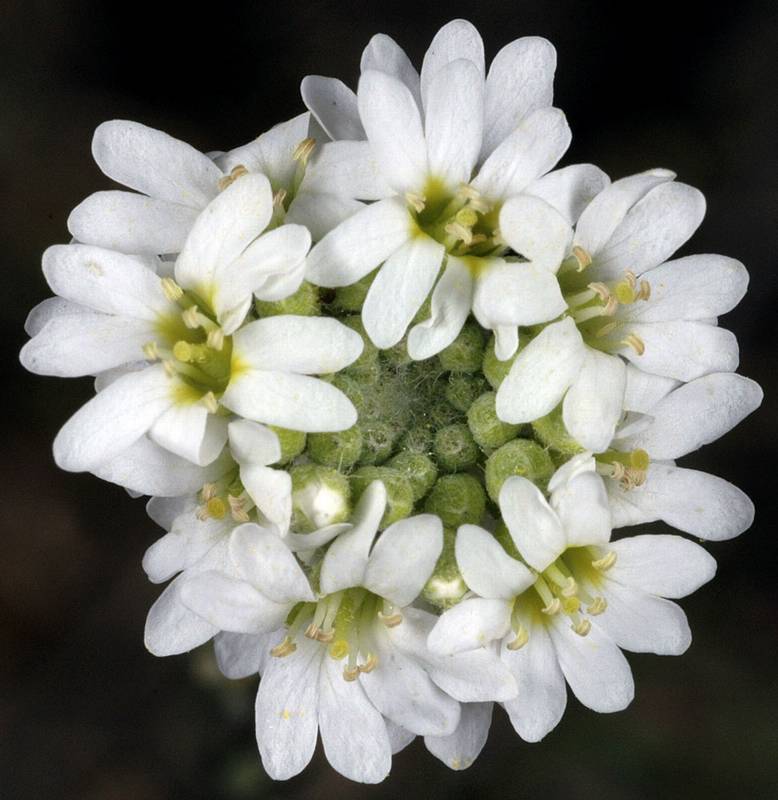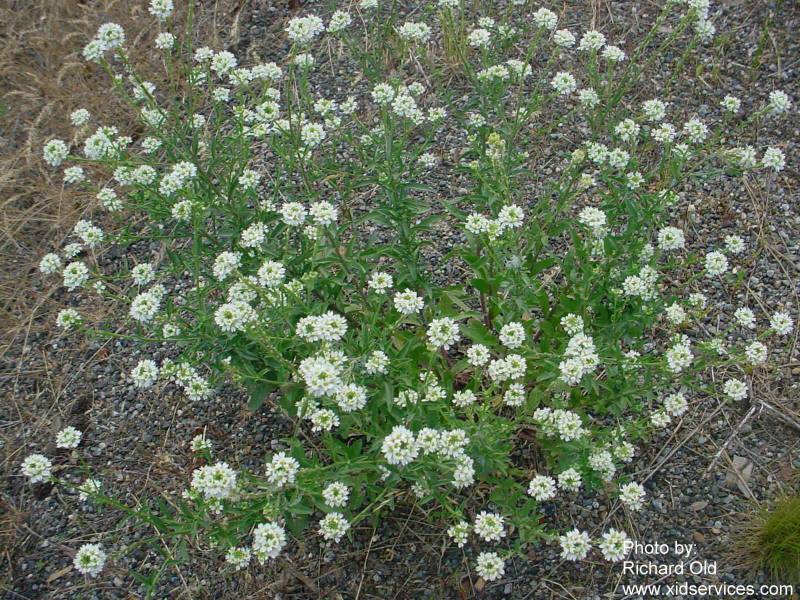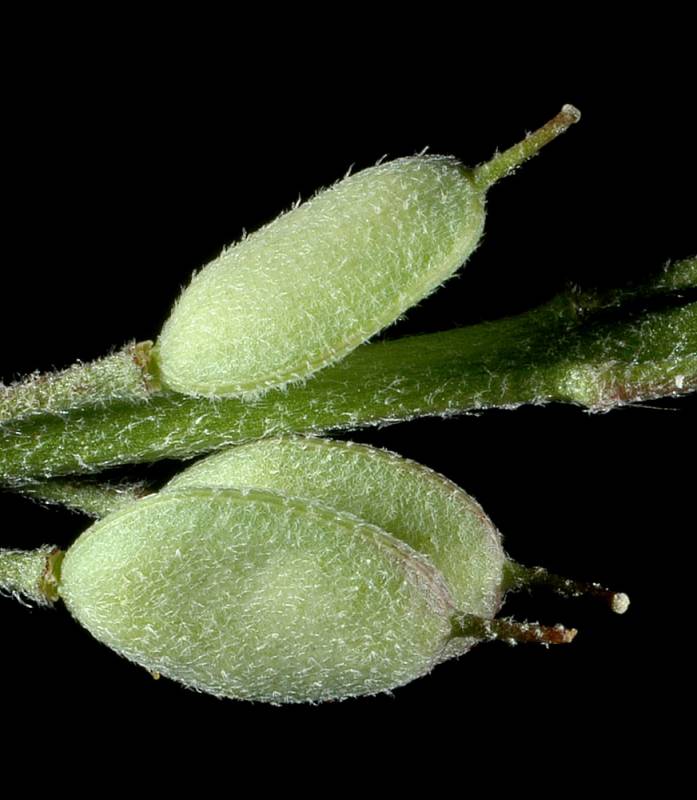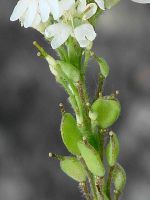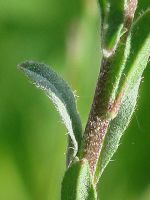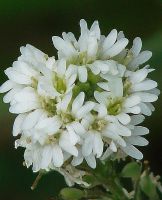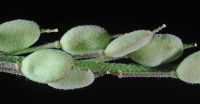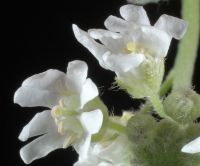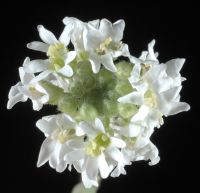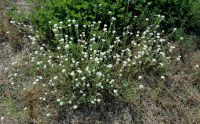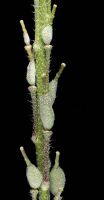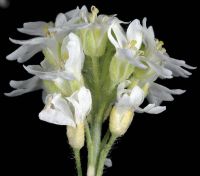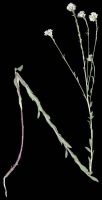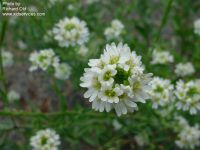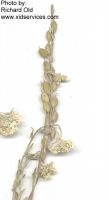Distribution: Occurring east of the Cascades crest in Washington; British Columbia to California, east across most of North America to the Atlantic Coast.
Habitat: Uncommon in dry, waste places in most of the Pacific Northwest; common in northeast Washington.
Flowers: May-August
Origin: Introduced from Europe
Growth Duration: Annual, Biennial, Perennial
Conservation Status: Not of concern
Pollination: Bees, flies, butterflies
Gray-stellate annual, the stems usually sparingly-branched at the base and freely-branched above, erect, 3-11 dm. tall.
Basal leaves oblanceolate, entire, 3-5 cm. long, slender-petiolate; cauline leaves similar to the basal, numerous, alternate, appressed-ascending, sessile, gradually reduced to small bracts above.
Inflorescence of simple or compound racemes; pedicels slender, erect, 5-10 mm. long; sepals 4, 2-3 mm. long; petals 4, white, 4-6 mm. long; stamens 6, the filaments flattened; style slender, persistent; stigma weakly lobed.
Silicles oblong-elliptic, 5-7 mm. long and half as broad, moderately inflated, stellate, the valves lightly nerved near the base; seeds in 2 series, wing-margined.
Publication: Syst. Nat. 2: 291. 1821.
PNW Herbaria: Specimen records of Berteroa incana in the Consortium of Pacific Northwest Herbaria database
WA Flora Checklist: Berteroa incana checklist entry
OregonFlora: Berteroa incana information
E-Flora BC: Berteroa incana atlas page
CalPhotos: Berteroa incana photos

